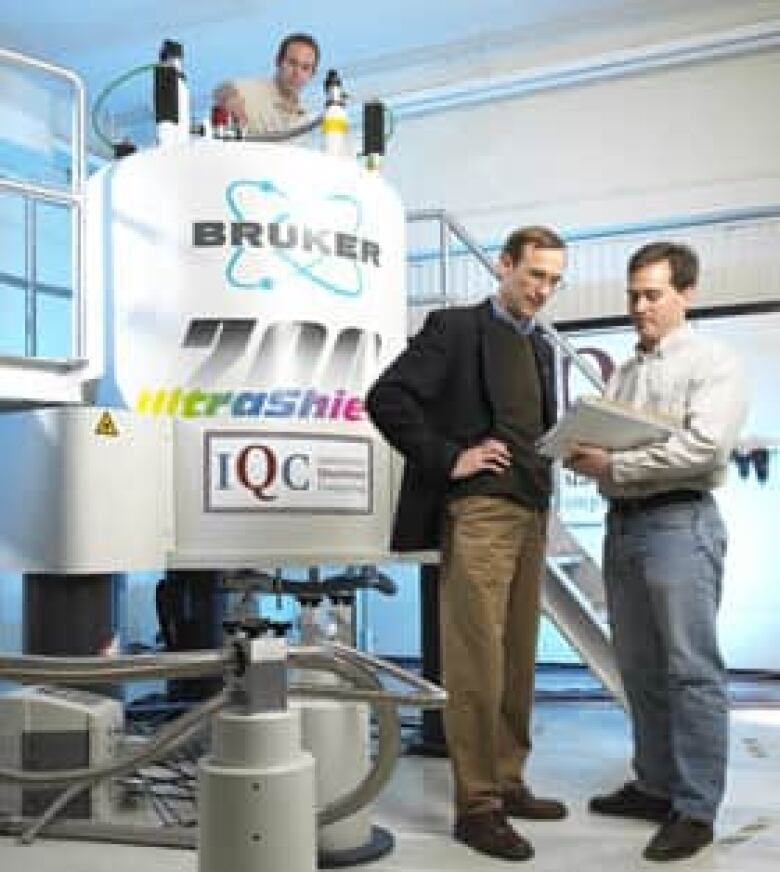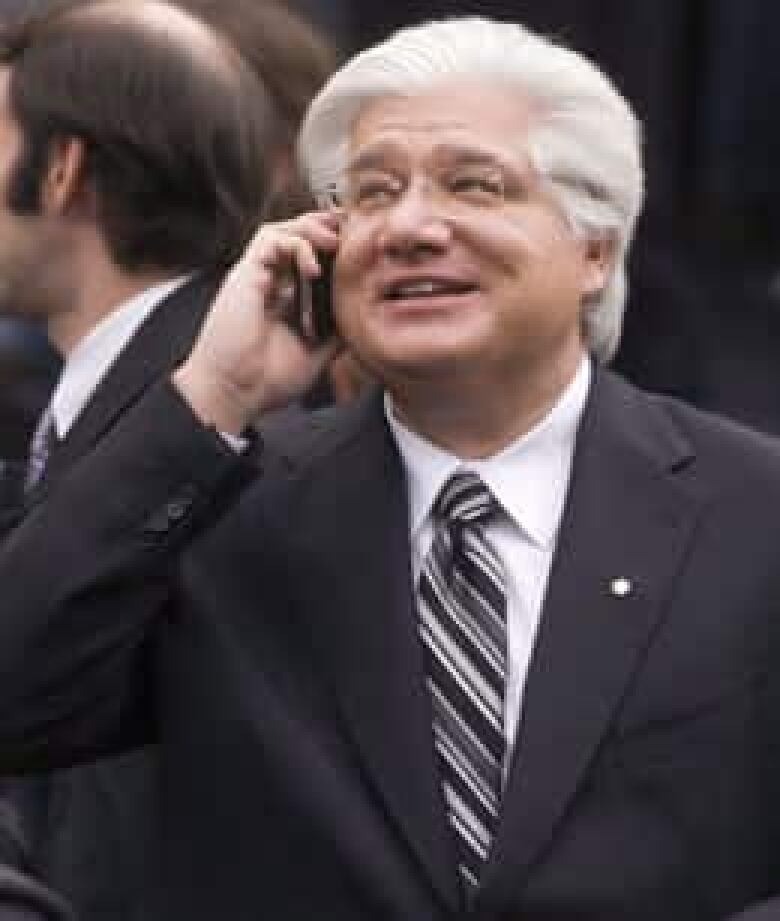Waterloo institute seeks to unlock secrets of subatomic world

For many researchers, particularly in the medical community, the federal government's budget on Jan. 27 was a disappointment, particularly because of its failure to add new money to Genome Canada and its cuts to Canada's three main research granting agencies.
But there were some winners, too, as the budget promised infrastructure money for universities, national research labs and Canadian Foundation for Innovation projects.
Perhaps no place benefited more than the University of Waterloo's Institute for Quantum Computing, which got $50 million toward attracting more researchers and building a new facility that combines quantum computing research with nanotechnology.
For the institute, founded in 2002 as part of the University of Waterloo with help from government and private contributions from Research in Motion co-CEO Mike Lazaridis, the federal money matches a previous donation from Lazaridis and a contribution from the Ontario government. The three contributions make up a total of $150 million, to bespent on whatinstitute head director Raymond Laflamme hopes will be ground-breaking research.
With so many infrastructure programs focused on short-term gain, it may seem odd that the scientific community, industry and government are willing to bet on quantum computing, a field that even its most ardent supporters admit is decades away from practical, consumer applications.
Such commitment speaks to the potential benefits of quantum computing, said Laflamme.
"In some sense, quantum computing represents the Mecca for computing," said Laflamme. "If we can build a quantum computer, we've harnessed the quantum world, and we can do whatever we want with it."
Shrinking computer chips, growing problems
To understand why people are excited about quantum computing, it might help to understand how it works.
Modern computers are based on the transmission of electricity through circuits made of tiny switches that can either be turned on or off, allowing them to carry and send data known as bits as either ones or zeroes.
Increased efficiency in shrinking the size of these circuits over the last50 years has allowed scientists to cram more and more switches onto computer chips, allowing for smaller, more powerful computers.
But once circuits become too small, they become subject to not only the laws of classical physics that govern electromagnetism but also to quantum mechanics, the weird laws that govern the subatomic world, and begin to experience errors.
In particular, the quantum world allows for a property known as superposition the ability of a particle like anelectron orphotonto be at two places at the same time, simultaneously.
'If you measure a qubit, you will see zero or one. If you don't measure it, you can keep this property of superposition, which is really weird ... It's like if you went to a garage, and they tell you that you cannot look at the engine while it's running.' Raymond Laflamme, director of theInstitute for Quantum Computing
If you think that sounds strange, you're notalone. Many great scientists, including physicist Albert Einstein, were at first flummoxed by the implications of quantum mechanics.
Our insight into the quantum world began in particular with an experiment performed by English scientist Thomas Young at the start of the 19th century.
Young was investigating the properties of light in an effort to determine whether it behaved like a wave or like a particle. He designed an experiment in which light would shine on an object that had two narrow slits cut into it, and he would observe the pattern of light that passed through the slits. When either one of the slits was open by itself, a similar pattern of light emerged, but when both slits were open, it created what is known as an interference pattern, with alternating bands of bright and dark spots emerging.
The experiment seemed to confirm that light was a wave, and that the pattern emerged because light of similar wavelength joined to create brighter light while lightof opposite wavelengths cancelled each other out.
But later experimentation showed that light was also a particle called a photon. Young's experiment was recreated, but with only one photon at a time passing through the slits. The result was baffling: even though just one photon passed through, the interference pattern remained.
Somehow, the photon had managed to be in two places at once and was interfering with itself. Equally strange was this: any attempt to detect which slit the photon came from "perturbed" the experiment and essentially forced the photon to choose, at random, one of the two positions.
"Every time we want to learn something about a quantum system, we always leave some kind of fingerprint or trace behind, and so the interference pattern disappears," said Laflamme. "The act of measuring destroys the quantum properties."
It's for this reason that unless you are perhaps a narcolepsy researcher you are not able to be at work and asleep in bed at the same time: there are so many particles interacting with the particles that make up our bodies and the objects in our everyday life that subatomic particles are constantly having to choose, so to speak, between different states. In all but the most pristine environments, quantum properties are usually lost.
Potential to outperform supercomputers
The property of superposition can potentially bedevil traditional circuits as they approach atomic sizes, but it also presents an opportunity for researchers if they harness it, though it's far from a simple technology to master.

"If you measure a qubit, you will see zero or one. If you don't measure it, you can keep this property of superposition, which is really weird," said Laflamme.
"If I push it to make it absurd, if I sell you a quantum computer tomorrow, I would tell you that if you want to use it, you cannot stop halfway through a computation and look at where you are at, because if you do it, you are going to destroy the quantumness. So you cannot touch it until it spits out the answer at the end. It's like if you went to a garage, and they tell you that you cannot look at the engine while it's running."
Absurd though it may sound, the potential of quantum computing is enormous. If bits of data in a quantum computer called qubits can be zero, one or both, it offers the possibility to improve memory and speed as one adds more qubits. And that speed improves exponentially as one adds more bits.
Two qubits, for example, would be the equivalent of two to the power of two bits, or four bits, while three qubits would be able to carry the same amount of information as two to the power of three bits, or eight bits, or one byte.
A computer with 50-qubits of random access memory, then, would have the equivalent of two to the power of 50 bits, or 128 terabytes of memory, more than IBM's Roadrunner supercomputer, one of the most powerful computers in the world.
Researchers are decades away from that level of sophistication, however.
Part of the problem is the random nature of qubits once they are observed: if you don't know if a bit will be a one or a zero, how can you rely on it as a means of carrying information? One way physicists attempt to solve this problem is through quantum entanglement: another strange property of the quantum world whereby particles can become linked even after they are separated. Thatmeans knowing the state of one particle allowsphysicists to know the state of its partner without having to directly observe it.
Scientists are also trying a variety of methods using different materials to create quantum computers, using atoms trapped with lasers, chains of charged ions or loops of superconducting material, in an effort to find the most stable and least complicated method.
At the institute in Waterloo, Laflamme's group has built a quantum computer using nuclear magnetic resonance technology similar to that used in magnetic resonance imaging (MRI) where atoms are oriented in either an up, down or halfway position using a strong magnetic field.
So far, they've been able to achieve 12 qubits, or the equivalent to 4,096 bits, or 512 bytes, a paltry sum by today's standards. It's also a bulky machine, as tall as a person and much wider, said Laflamme.
"Quantum computers do not look like laptops yet," he said.
A new way to encode messages
More promising is an area of quantum information called quantum cryptography, which harness the same principles of quantum mechanics to enhance security for electronic messages.
Consider the property of entanglement: if two particles can be linked in such a way that the properties of one are immediately conveyed to another, then a powerful encryption tool is possible.
As Laflamme explains, if Aliceand Bob want to exchange a secretmessage encrypted with a key using quantum technology they can detecteavesdroppers. Without one,she and Bob should see the same value for that key. However, if someone attempts to intercept the key on its way to Bob, they will alter it by the very act of viewing it, and when Alice attempts to confirm parts of the key with Bob, he will likely have different results.
It's the potential for creating powerful encryption tools for securing everything from credit card transactions to private communications that makes quantum information research of particular interest to both governments and the business world, and it's an area in which Laflamme hopes Waterloo can take the lead.
With the promised money from the budget, Laflamme hopes to complete by the end of 2010 an $80 million facility to house labs that will harness nanotechnology tools to create materials small enough and pristine enough to allow for the kind of precision quantum computers require to work at the atomic and subatomic levels.
And he also hopes to expand its numbers from 17 faculty, 20 post-doctoral students and 65 students to 30 faculty, 50 post-docs and 125 students.
"With this we will have a critical massand establish us as the strongest place around the world for this kind ofresearch," he said.












_(720p).jpg)


 OFFICIAL HD MUSIC VIDEO.jpg)
.jpg)



























































































